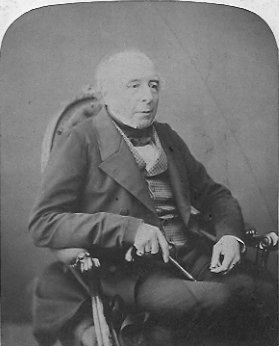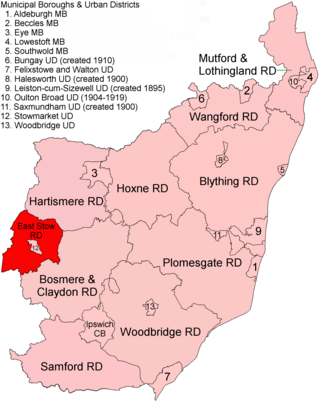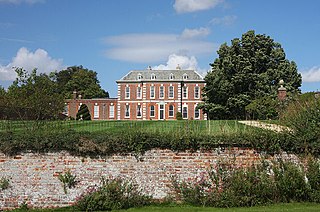
Philip Hardwick was an English architect, particularly associated with railway stations and warehouses in London and elsewhere. Hardwick is probably best known for London's demolished Euston Arch and its twin station, the original Birmingham Curzon Street, which stands today as the oldest railway terminus building in the world.

Gipping Rural District was a rural district in the county of East Suffolk, England. It was created in 1934 by the merger of the disbanded Bosmere and Claydon Rural District and the disbanded East Stow Rural District, under a County Review Order. It was named after the River Gipping and administered from Needham Market.

Ickworth House is a country house at Ickworth, near Bury St Edmunds, Suffolk, England. It is a neoclassical building set in parkland. The house was the residence of the Marquess of Bristol before being sold to the National Trust in 1998.

East Stow was a rural district in East Suffolk, England from 1894 to 1934.

Great Finborough is a village and civil parish in the Mid Suffolk district, in the county of Suffolk, England; about 3 miles (5 km) south west of Stowmarket and near one of the sources of the River Gipping. It has two schools, a pub and an active church. In 2001 the parish had a population of 755, increasing to 808 at the 2011 Census.

Finborough School is a co-educational independent school. It is situated in and around Finborough Hall, in the village of Great Finborough, near Stowmarket, Suffolk, England.

Colonel William Wollaston was a British M.P. for Ipswich between 1768 and 1784.
Haughley is a village and civil parish in the English county of Suffolk, about two miles from Stowmarket in the Mid Suffolk District. The village is located 2 miles (3.2 km) miles northwest of the town of Stowmarket, overlooking the Gipping valley, next to the A14 corridor. The population recorded in 2011 was 1,638. Mentioned in the Domesday Book, it was the site of a castle, a church on the pilgrim's route to Bury St Edmunds Abbey, and a market. Adjacent farms on the north side of the village were also home to one of the first studies of organic farming and the first headquarters of the Soil Association.

William Wollaston, of Finborough, Suffolk, was an English lawyer and Whig politician who sat in the House of Commons from 1733 to 1741.
This is a list of Sheriffs and High Sheriffs of Suffolk.

Old Buckenham Hall School is a day and boarding preparatory school with pre-prep for boys and girls in the village of Brettenham, Suffolk, England.

Glemham Hall is an Elizabethan stately home, set in around 300 acres (120 ha) of park land on the outskirts of the village of Little Glemham in Suffolk, England. It is a Grade I listed building, properly called Little Glemham Hall.

Rougham is a village and civil parish in the English county of Norfolk. It covers an area of 10.85 km2 (4.19 sq mi) and had a population of 152 in 69 households at the 2001 census, reducing to a population of 141 at the 2011 Census in 55 households. For the purposes of local government, it falls within the district of Breckland.

Dalham Hall is a country house and 3,300-acre (13 km2) estate, located in the village of Dalham, Suffolk, near Newmarket, and 13 kilometres (8 mi) west of Bury St Edmunds.
Grace Dieu Manor is a 19th-century country house near Thringstone in Leicestershire, England, occupied by Grace Dieu Manor School until 2020. It is a Grade II listed building.

Ufford Hall is a Grade II* listed manor house in Fressingfield, Suffolk, England, dating back to the thirteenth century.

Richard Makilwaine Phipson (1827–1884) was an English architect. As diocesan architect for the Anglican Diocese of Norwich, he was responsible for renovating almost 100 churches in East Anglia.

The Pettiward Estate is a privately owned set of reversions in the far edge of two inner boroughs of south-west London, England, now owned by a family trust of the family, who were from 1794 until 1935 of Finborough Hall, Suffolk. The family oversaw and took a direct involvement in much of the speculative development of these areas: parts of West Brompton and small parts of Putney.

St Andrew's Church is situated in the village of Great Finborough, Suffolk, England. It is a Grade II listed building.
The Pettiward Family were a landed family prominent in Putney and Great Finborough, Suffolk who control the Pettiward Estate in Earl's Court, London.














